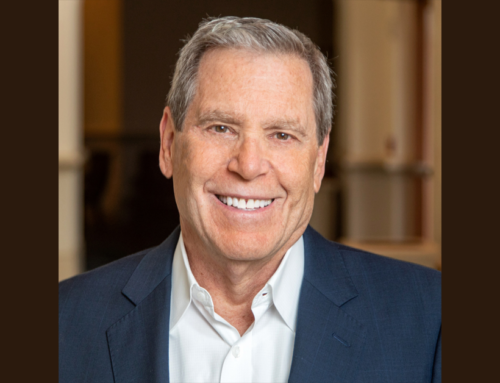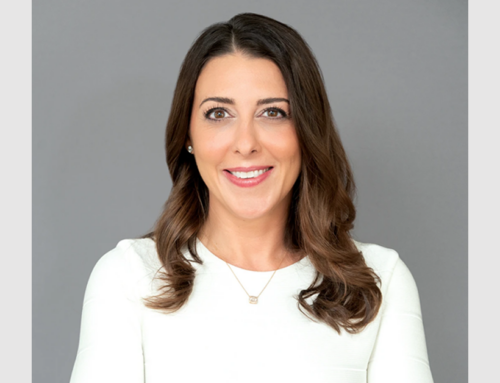How do you go from a struggling, cash-strapped RIA to running a fast-growing, profitable top firm? Adopt Sten Morgan’s 7 Mindsets and you’ll be on your way.
As the founder of Legacy Investment Planning, Sten Morgan has lived that dream, and overcome the obstacles that go with it. Sten was recently named one of the “40 Under 40” by Investment News, and his new book, “7 Mindsets of Success,” challenges entrepreneurs to change their mindsets, and see their businesses, and the world, differently.
On today’s show, Sten explains how the mindsets that he had been developing from a young age allowed him to go from making nothing, to running a successful RIA firm in three short years.
10 Key Insights from Sten Morgan’s “7 Mindsets of Success.”
1. “For me, ‘future self’ is the exercise of really trying to envision, ‘What do I want to be?’ I feel like a lot of people in our business, as advisors, or really just in life, are saying, ‘Hey, I want this. This is my dream goal.’ But their actions almost assume that it’s just going to happen some day by accident. People aren’t doing things on a daily basis to get themselves closer to that goal. So, the future self exercise can be a constant reminder, and initially, you have to do it intentionally. Over time now, it kind of happens subconsciously for me, but it’s what keeps us on path to say, ‘The decisions I’m making today, are they bringing me closer to that goal or are they bringing me farther away?'”
To continue reading, please enter your email address to unlock the content.

Sten Morgan: It’s amazing what we’re all capable of if failure’s not an option.
2. “What makes us feel comfortable, in reality, could be holding us back from achieving a goal or reaching our full potential. It’s amazing what we’re all capable of if failure’s not an option, if there’s not something there to catch us, and in our mind we know that if I don’t succeed, there’s going to be a long fall that follows.”
3. “I’ll work on the occasional weekend, but if it’s my goal to have balance in my life, I don’t feel that you have to give up success to do it. So I tell people my story, or I’m coaching a group of advisors, and I tell them I’m a million-dollar practice. I started with zero clients, and in three years was a chairman-level producer in my broker-dealer. They’re all impressed, but then I say, ‘Oh, by the way, I get home at 5:30 every day.’ While I’m saying this, they’re thinking, ‘Oh, he must work seven days a week. He just sacrifices everything to make that happen.’ But if I can coach these advisors or other entrepreneurs to say, if you can accomplish in eight hours what most people take twelve, you can still be really successful without sacrificing everything else.”
4. “I was able to determine a target market, and identify what I wanted my client service model to look like, through a process of envisioning it. I needed to know what the end goal was. So that was the ‘future self’ at that point: Where am I going to be in three years, and what does that look like, my practice?”
5. “I recognized the market was changing and I had to market in a different way, so I surrounded myself with good marketing people that know how to do it. So it was, how can I, as opposed to just trying to be everything to my own practice, how can I outsource some of that knowledge? If I know that great advisors are doing great online marketing, that’s something I need to learn about as quickly as I can in order to accelerate that growth curve.”
6. “One big mistake advisors often make is waiting too long to make the next hire. I’ve seen a lot of advisors in the business wait a few years too long to hire somebody. My advice is hire that person, even if that means you share with another advisor, because the most effective thing an advisor can be doing is getting new clients and planning for clients using their technical knowledge that no one else can do for them on their team. So that was a big turning point for me was when I added staff. I no longer was processing. I wasn’t setting as many meetings. It was freeing me up to essentially spend my time on a revenue-generating activity. That was a big moment for me.”
7. “The staffing piece was difficult for me initially because I probably didn’t know enough about what to look for, so I went through two before I found the ideal one. And that can be painful, and at times, it can make you feel like I just don’t want to hire anybody because it’s so distracting and frustrating when they leave. But you know it’s a needed position. You have to have help, so as I refined that process, it was really about, ‘Who’s already in the industry or a related business that’s having success?.’ Getting referrals from other advisors’ assistants. It became more of an intentional process as opposed to just saying, ‘Hey, this looks like a good resume,’ because a lot of people have good-looking resumes. It was, could I get someone inside the industry or somebody that already has experience in this kind of client-service role so they’re already pre-qualified to some extent, and then really it’s about, do that person and I have a good connection?”
8. “My wife kids with me, ‘You would never want to work with five of yourselves. It just wouldn’t work.’ So, once I was able to say, ‘I shouldn’t be frustrated by these differences because I couldn’t just work with myself all day. I need these other people,’ it really helped me appreciate and work through those differences as opposed to chalking it up to, ‘Hey this person isn’t a good fit,’ and continuing the cycle of frustration.”
9. “Defining the client service model from the beginning is important. Even when I recognized that I was serving clients really well, if I hadn’t set the expectation up front that here’s what we’re going to do, and here’s why we’re different, some clients don’t know better. They don’t know that you’re doing ten times what another advisor would be doing for them for the same fee potentially. So coming up with a segmented model of saying, for our A clients, we do this, B clients, C clients, and so on.”
10. “You can earn an upper six-figure income in a matter of three or four years if you do it right. Especially appealing to millennials generation now, they don’t want to wait 10 years to do something. They also shouldn’t feel they could do it in one or two years, but you can be successful in this business in a shorter period of time than most people think.”
Resources
Legacy Investment Planning Visit Sten and his team online
“The Advisor’s Handbook” For a limited time, use promo code 7mindsets for a discount on Sten’s financial advisor training program
“7 Mindsets of Success” Buy Sten’s new book
The Millionaire Messenger book by Brendon Burchard. The #1 New York Times bestseller from world-renowned advice expert teaches everyday people how to share their story and wisdom with the world and build a lucrative business doing so.
Blue Ocean Strategy book by W. Chan Kim and Renée Mauborgne. In this perennial bestseller, embraced by organizations and industries worldwide, globally preeminent management thinkers W. Chan Kim and Renée Mauborgne challenge everything you thought you knew about the requirements for strategic success.
Values Clarification Toolkit Click here to download this FREE tool and start living your values.





